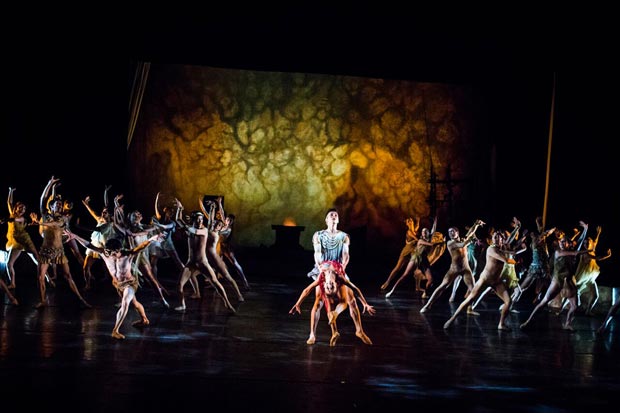
© Anna Kuzmina. (Click image for larger version)
Gelsey Kirkland Ballet
Mischief, Mischief, and more Mischief: Harlequinade, The Wedding Procession, and Walpurgis Night
★★★✰✰
New York, GK Arts Center
22 May 2016
gelseykirklandacademyofclassicalballet.org
On the Waterfront
Over the weekend I checked out the Gelsey Kirkland Ballet’s “Mischief, Mischief, and More Mischief” program at its headquarters in DUMBO. (The school, housed in a warehouse-like space near the Brooklyn waterfront, has its own black box theatre.) I wrote about the school and its related studio company in March, but hadn’t seen a performance in a couple of years. I have to say, I was rather impressed. The show consisted of three works – a one-act version of Harlequinade, Leonid Yakobson’s The Wedding Procession, and Leonid Lavrosky’s Walpurgis Night – performed by dancers from the studio company backed up by students from the school. The dancing was polished and strong throughout. Maybe even too polished in the case of Harlequinade, where I would have preferred more spontaneity and a greater sense of play. Amongst other things, Kirkland and her team of (mostly Russian) teachers and coaches have taught the dancers to use their eyes so that the entire face is illuminated. The sets and costumes, many adapted from a trove purchased at bargain-basement prices from New York City Opera, add an extra layer of color and sophistication to the proceedings.
I was most impressed by Leonid Yakobson’s The Wedding Procession, a real rarity, staged by two ballet masters, Nikolai Levitsky and Vera Solovieva, former directors of the Yakobson Company in St. Petersburg. Yakobson, a contemporary of Balanchine, was a Russian innovator with an interest in character dance and acrobaticism, whose work was alternately encouraged and suppressed during the Soviet period. Both Maya Plisetskaya and Baryshnikov were fans; he danced one of Yakobson’s miniatures, Vestris, when he first arrived in the US.
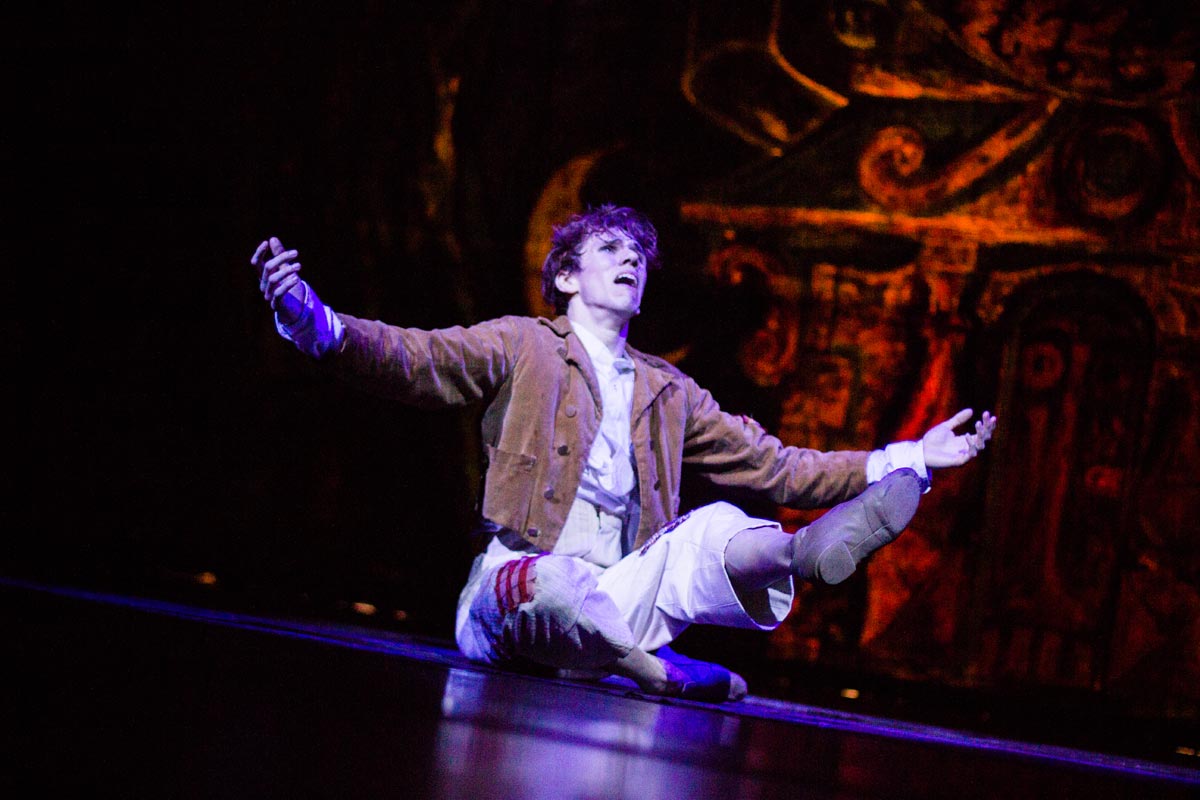
© Anna Kuzmina. (Click image for larger version)
This one-act ballet depicts an arranged marriage between a young bride (Kailee Felix) and a rich man (Gustavo Ramirez), with all the attendant party guests. The twist is that the bride is in love with another man, a pauper (Anderson Souza). It’s a bit like Tudor’s Lilac Garden, except that it’s set in an early-twentieth-century shtetl. The music is Shostakovich’s “Piano Trio Number 2 in E minor.” All the dancing is off-pointe, with a strong folk flavor. Each role is a miniature: the fat, pushy mother (Sabin Alvarez), the unhappy bride, the happy-go-lucky wedding musicians. Like figures in a clock, they are set in motion by Shostakovich’s sardonic, rhythmic music. (The sound-system is unfortunately quite tinny.) The style is strikingly original. I hope the Kirkland company brings back more of these Yakobson works; they are a welcome addition to the mix of ballet styles we see in New York.
In contrast, Harlequinade, though impeccably danced, seemed rather flat. This commedia dell’arte love story by Marius Petipa includes all the usual suspects: Harlequin, Columbine, Pierrot, Pierrette, Pantaloon, the latter vividly performed by Kirkland’s husband, Michael Chernov. Though every character was distinctly-etched, the characterizations were rather one-note, which inevitably lessened the piece’s charm. As Columbine, Dawn Gierling had the same, wide-eyed, sweet expression from start to finish. Johnny Almeida (Harlequin) was smiley from his first entrance to his last. Sabina Alvarez, as Pierrette, had considerably more sparkle. Kirkland seems to encourage highly detailed performances, with little flourishes for the head, hands, and fingers, but doesn’t leave much space for personal interpretation. Nor is the musicality particularly playful; the dancers dance with the music, but don’t make it their own.
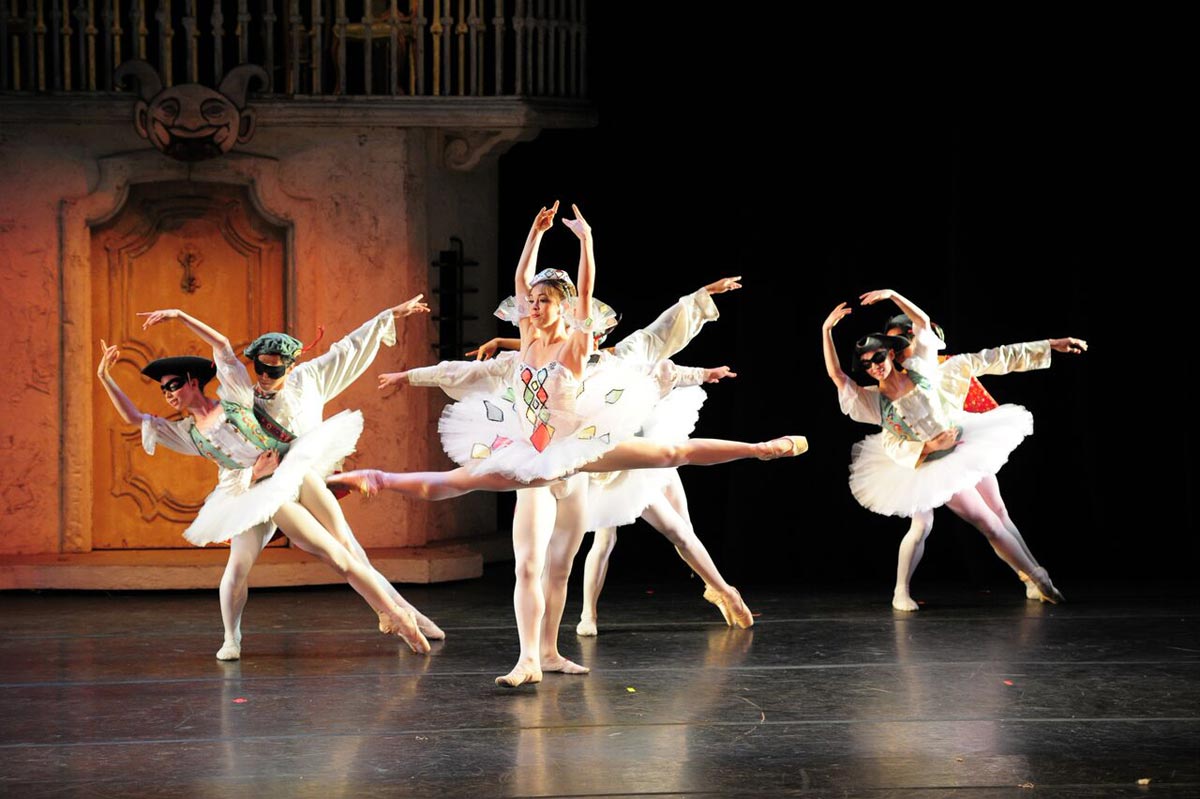
© Anna Kuzmina. (Click image for larger version)
Walpurgis Night, on the other hand, is an exercise in virtuosic kitsch of the highest order. The choreographer Leonid Lavrosky, another contemporary of Balanchine, was a mainstay of the Kirov and Bolshoi in the thirties and forties. Here, fauns frolic and spin in blinding spirals of à la seconde turns (kudos to Koki Yamaguchi). A nubile bacchanalian is carried onstage in a high lift, then swung around in every possible direction and position. (This is the point where ballet and ice-dancing collide.) Three nymphs do an Isadora Duncan-like dance with silken scarves. Revelers caress and carouse on the sidelines in a kind of ecstatic haze. While I pined for Balanchine’s more windswept, stylized version, I couldn’t help but be impressed by the dancers’ flashy virtuosity. This is no second-rate student group. The Gelsey Kirkland Academy is doing something right.










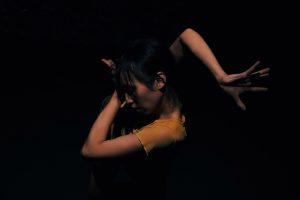
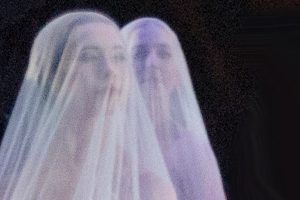
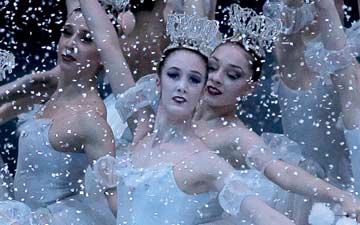

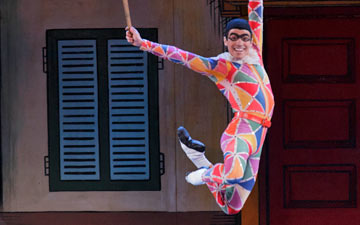
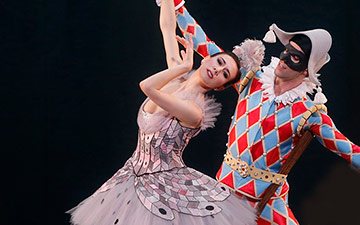
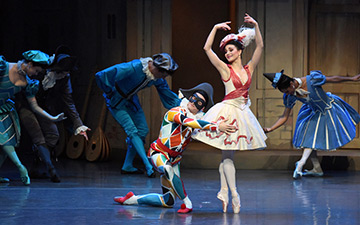
You must be logged in to post a comment.